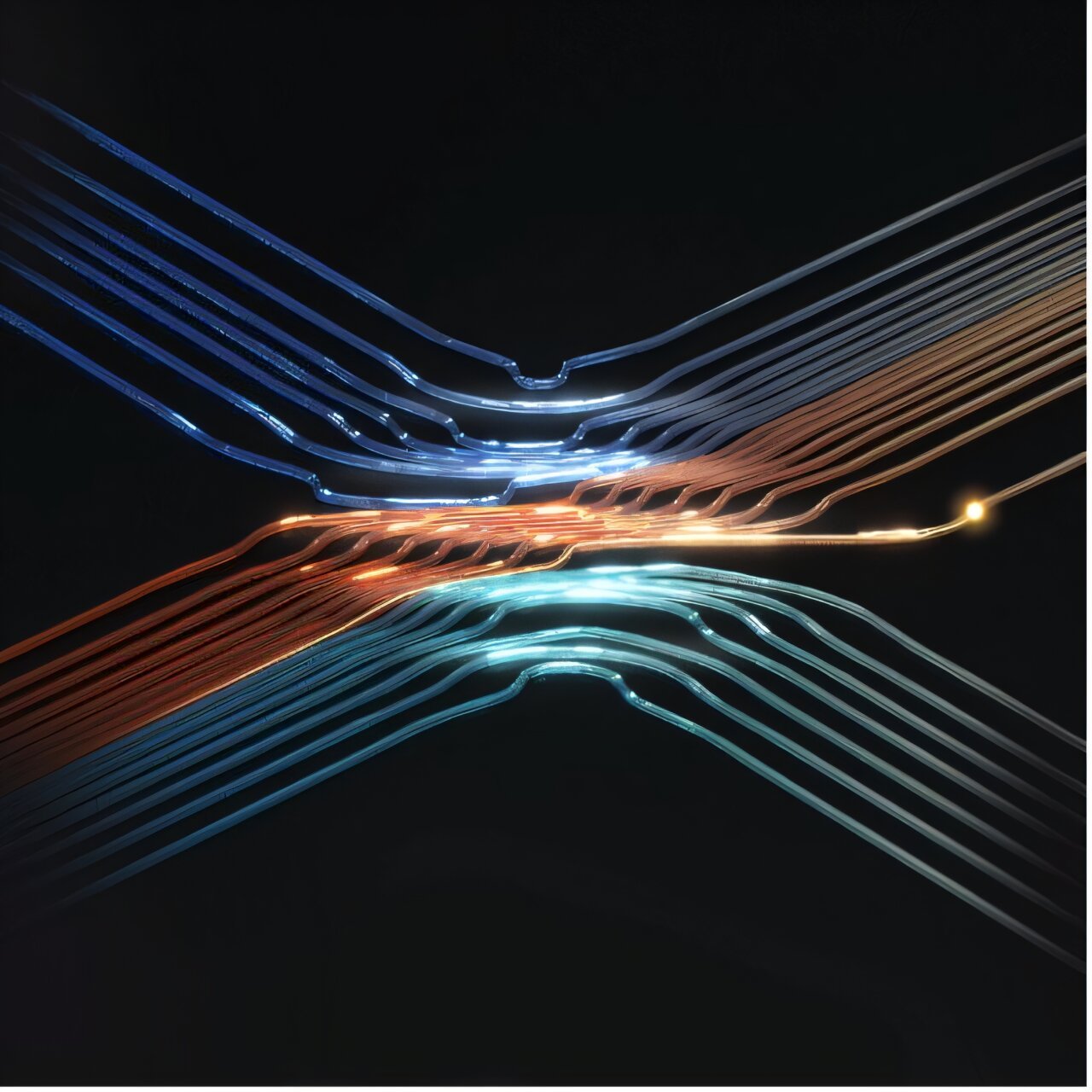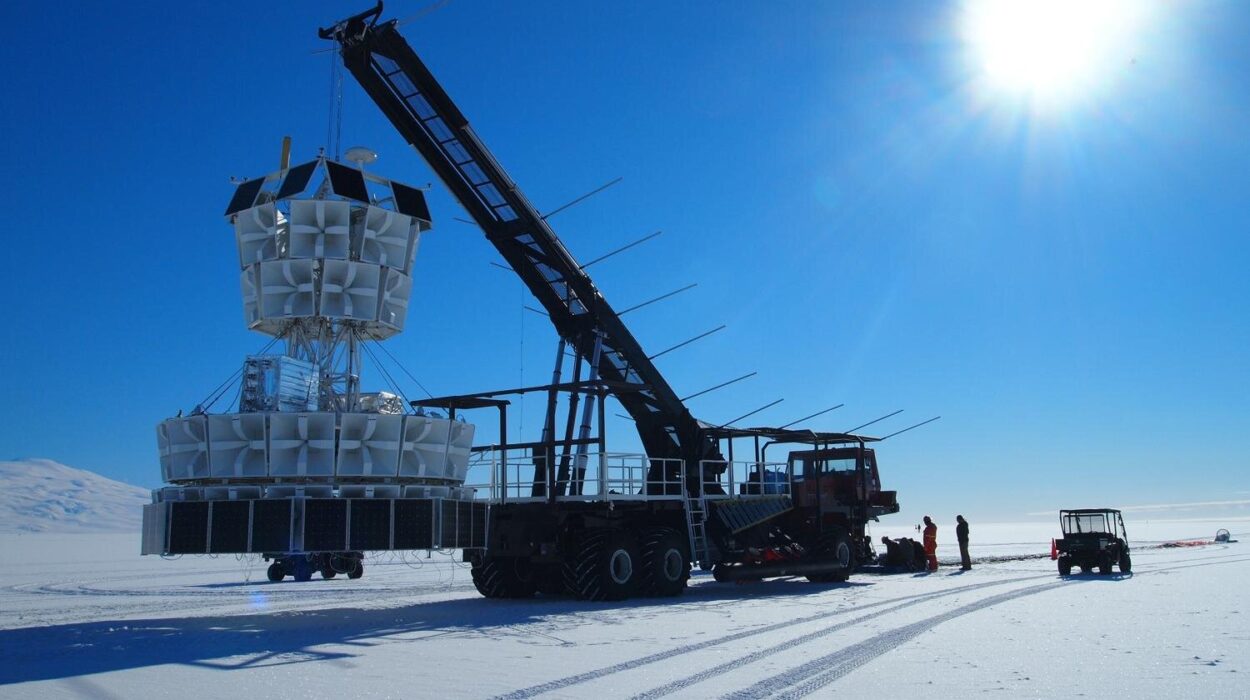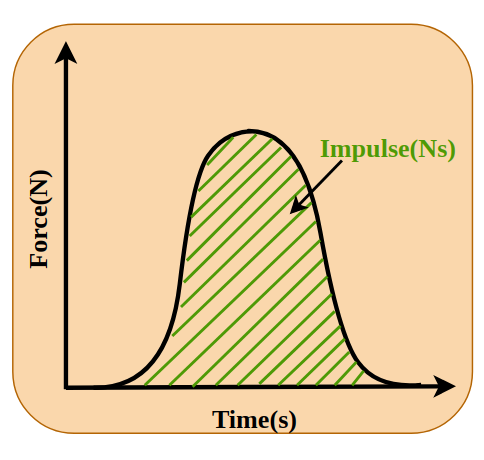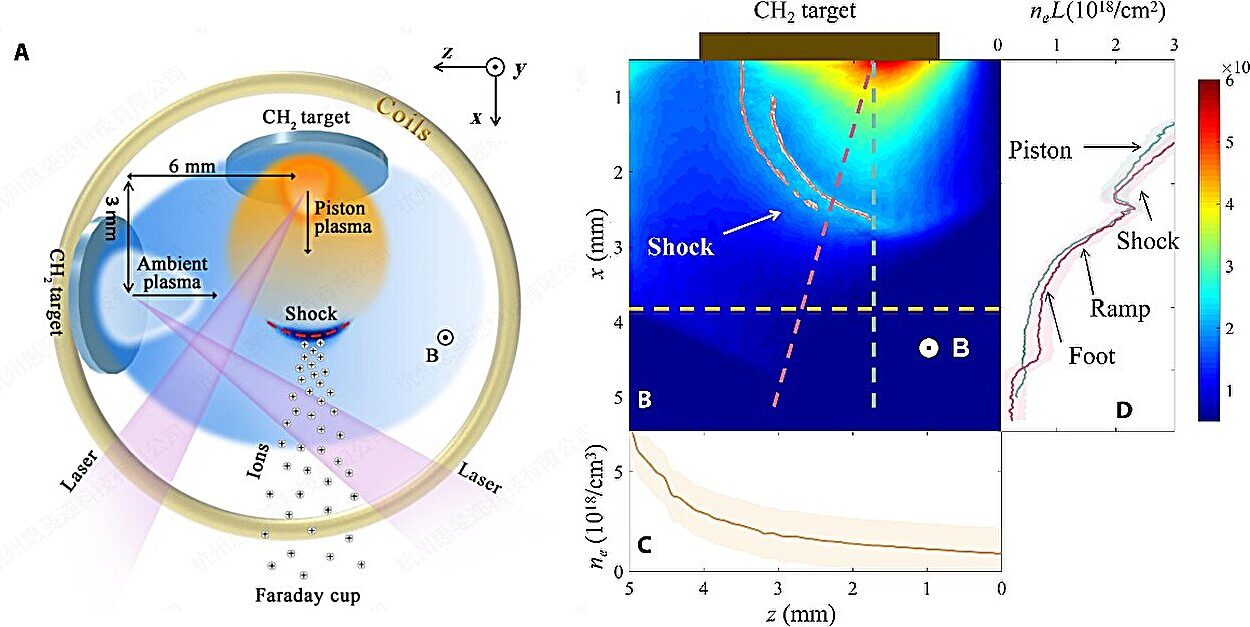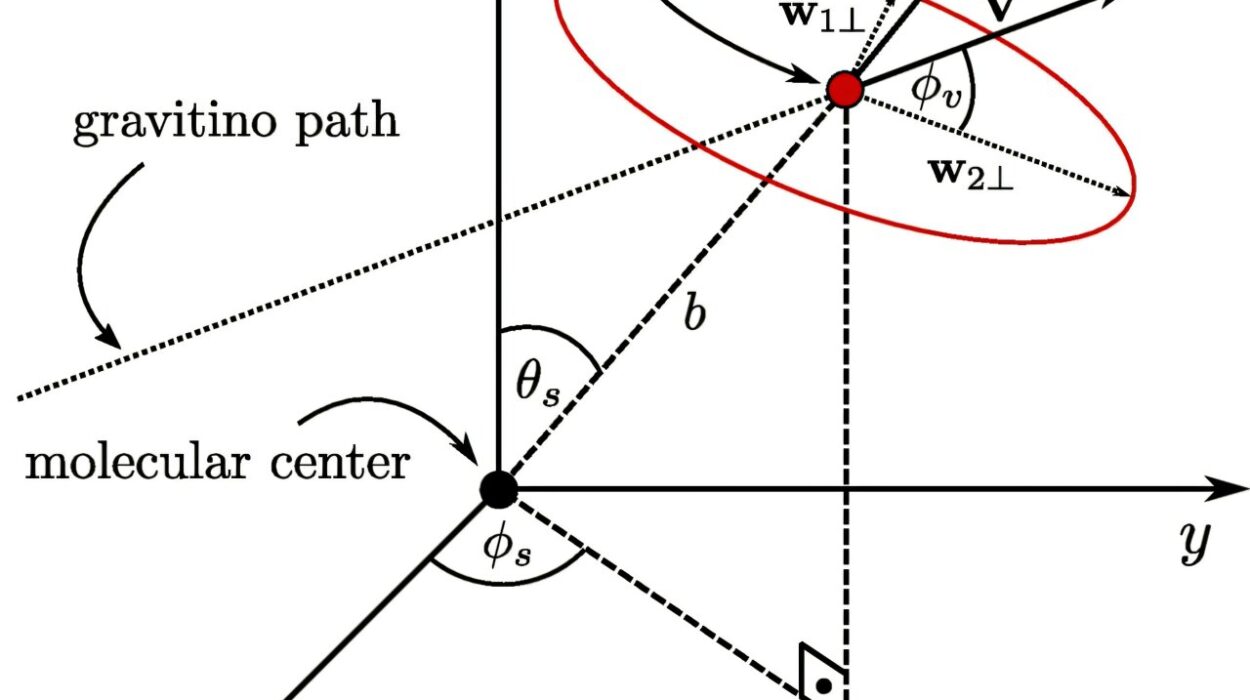For over a century, quantum mechanics has pushed the boundaries of human understanding, delivering insights that challenge our deepest assumptions about the universe. From Schrödinger’s cat to the mind-bending paradoxes of quantum entanglement, this field has consistently blurred the line between science and philosophy. Now, a groundbreaking study by researchers at Shanghai Jiao Tong University and Hefei National Laboratory adds a bold new chapter to the quantum story: the experimental verification of nonlocal energy alterations between entangled particles.
What does that mean? Let’s unravel this fascinating development, one quantum thread at a time.
Entanglement: The Quantum Connection That Defies Space
At the heart of quantum physics lies a concept that has both fascinated and baffled scientists since its discovery—quantum entanglement. When two particles become entangled, their properties are mysteriously linked. Measure the state of one, and you instantly affect the other, no matter how far apart they are. Einstein himself famously dismissed this as “spooky action at a distance,” but time and again, experiments have confirmed that entanglement is very real.
But could this quantum connection go even deeper than we thought? Could the energy of one particle be altered nonlocally, just by interacting with its distant twin? That’s precisely what Professors Xian-Min Jin, Jian-Peng Dou, and their team set out to investigate.
The Bold Idea: Nonlocal Energy Alteration
We already know that measuring one entangled particle immediately influences its partner’s state. What if that influence extends to energy itself? Could the energy distribution of one particle change, across space, because of what happens to another?
This concept, hinted at in the de Broglie-Bohm interpretation of quantum mechanics, has long hovered in the realm of theoretical speculation. The Bohmian view suggests that particles follow precise, deterministic paths guided by a “pilot wave”—and that quantum effects, including energy distribution, can be influenced nonlocally via these hidden variables.
Until now, however, no one had experimentally tested this strange but compelling idea.
The Experiment: Quantum Memories and Entangled Particles
The researchers at Shanghai Jiao Tong University and Hefei National Laboratory designed a pioneering experiment to explore this phenomenon. Central to their investigation were two quantum memories—sophisticated devices capable of generating, storing, and manipulating delicate quantum states.
By using these memories, they created an entangled pair: one particle was a photon emitted during a process called spontaneous Raman scattering, while its entangled partner was an atomic excitation trapped inside a quantum memory. Think of the photon as an elusive messenger and the atomic excitation as its anchored twin.
With this setup, they effectively had two parts of a quantum system that were deeply connected—one in the form of light and the other as stored energy in an atom.
But how could they probe this connection? How could they determine if energy could be nonlocally altered?
Peeking Behind the Quantum Curtain: The Mach-Zehnder Interferometer
Enter the Mach-Zehnder interferometer, a device used to measure quantum interference. Imagine it like a quantum version of a two-way mirror maze, where light (or quantum particles) can take multiple paths, recombine, and create interference patterns that reveal underlying information about their state.
By manipulating the photon (the first particle) and observing how it interacted with the interferometer, the team could deduce not just its behavior but the influence it exerted on its entangled partner—the atomic excitation (the second particle).
They employed two different probing methods:
- Strong measurement, by reading out the information directly from the quantum memory.
- Weak measurement, by using a gentler process called single-photon Raman scattering. Imagine trying to sense the movement of a shadow without disturbing it—this is the quantum equivalent. Each probe gave them “blurred” data about the excitation’s position, but combined with statistical techniques, they were able to piece together a coherent picture.
Following the Quantum Breadcrumbs: Bohm Trajectories and Probabilities
Once the team had gathered enough data, they turned their attention to mapping Bohm trajectories—hypothetical paths that particles might follow according to the de Broglie-Bohm theory.
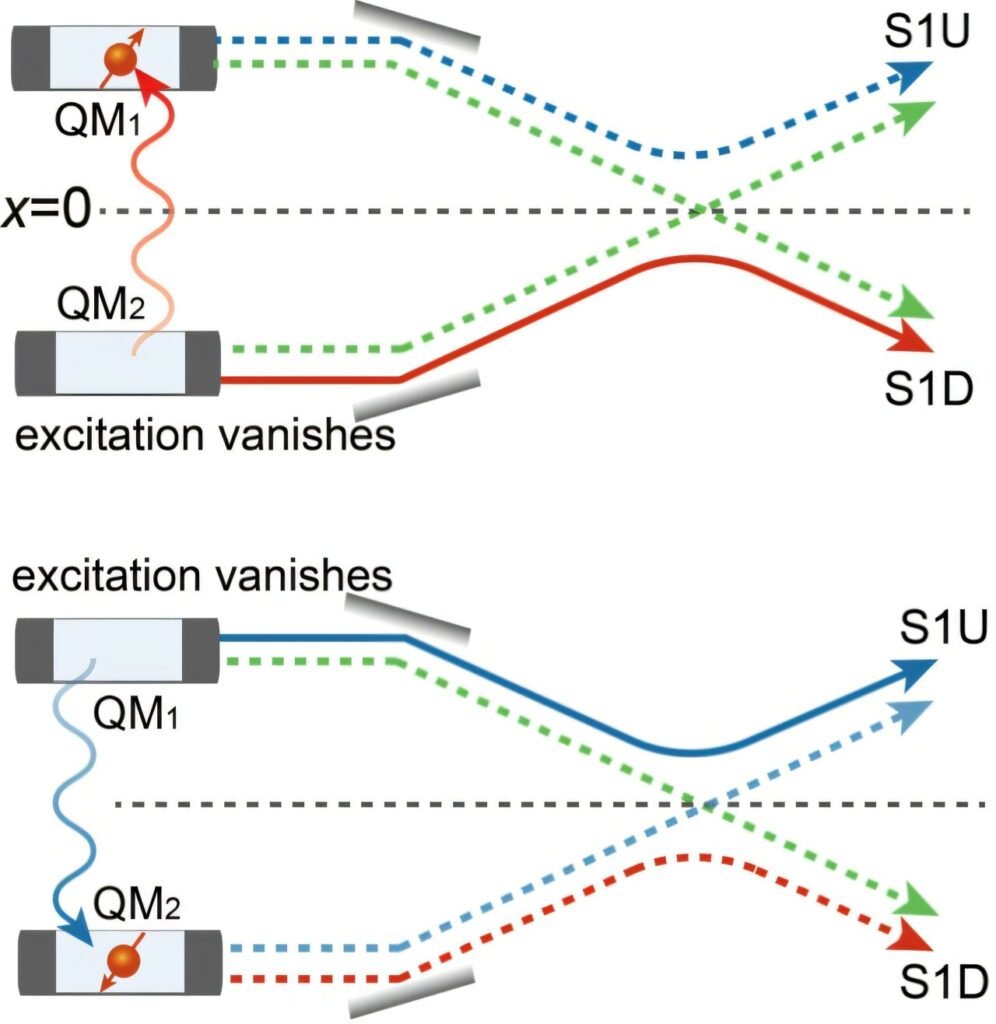
What they found was astonishing: the energy associated with the atomic excitation (the second particle) shifted, influenced by measurements performed on the photon (the first particle). These alterations were nonlocal, meaning they occurred across space without any physical transmission of energy—purely through the mysterious quantum link between the two particles.
Importantly, this wasn’t a case of energy transfer, which would imply some kind of signal traveling faster than light. Instead, it was a modification of the energy distribution, consistent with the idea that quantum correlations can nonlocally influence energy, even when the particles are far apart.
Implications: A New Frontier in Quantum Nonlocality
“This is exactly the ‘nonlocal energy alteration’ we proposed,” Jin and Dou explained. Their findings confirm a prediction of the de Broglie-Bohm interpretation and introduce a new concept into the lexicon of quantum physics: nonlocal energy alteration.
But what does this mean for the future of quantum science?
For one, it opens an entirely new pathway to understanding quantum nonlocality, not just as a spooky correlation but as a mechanism that can influence energy states across space. It challenges the traditional probabilistic interpretation of quantum mechanics and lends fresh credibility to the deterministic ideas of Bohmian mechanics.
More practically, the experiment highlights the potential of quantum memories as tools for exploring the deepest mysteries of reality. These devices could help test other perplexing ideas:
- Delayed-choice experiments, where decisions made in the present seem to affect outcomes in the past.
- The concept of empty waves, hypothetical ghostlike entities that guide particles without carrying energy.
- Light-speed oscillations in interference patterns.
- The interplay between quantum mechanics and relativity, still an unresolved frontier in physics.
Why It Matters: Beyond Science Fiction
For years, the idea of instant influence across space has been a staple of science fiction, from telepathy to teleportation. While the results of this study don’t suggest faster-than-light communication (we’re still a long way from quantum teleporters!), they do reveal a real, measurable phenomenon that was once confined to theoretical musings.
This nonlocal energy alteration might one day inform the design of quantum technologies, from more secure quantum communication networks to advanced quantum computing systems that harness these subtle energy effects.
It also prompts us to rethink our place in the universe. If energy, the very currency of the cosmos, can be influenced across space without physical interaction, what else might be possible?
The Road Ahead: Quantum Questions Without Easy Answers
Jin, Dou, and their team are clear: this is just the beginning. “For the time being, we do not reject the probabilistic interpretation of quantum mechanics while supporting Bohm’s theory,” they said. Their experiment doesn’t settle the debates raging in physics but adds new data and new questions to the mix.
What’s certain is that quantum memory devices, entanglement, and nonlocal correlations are set to redefine the frontiers of science.
And as we stand at the edge of this new understanding, one thing becomes clear: the universe is far stranger—and more wondrous—than we ever imagined.
Reference: Jian-Peng Dou et al, Test of Nonlocal Energy Alteration between Two Quantum Memories, Physical Review Letters (2025). DOI: 10.1103/PhysRevLett.134.093601.
